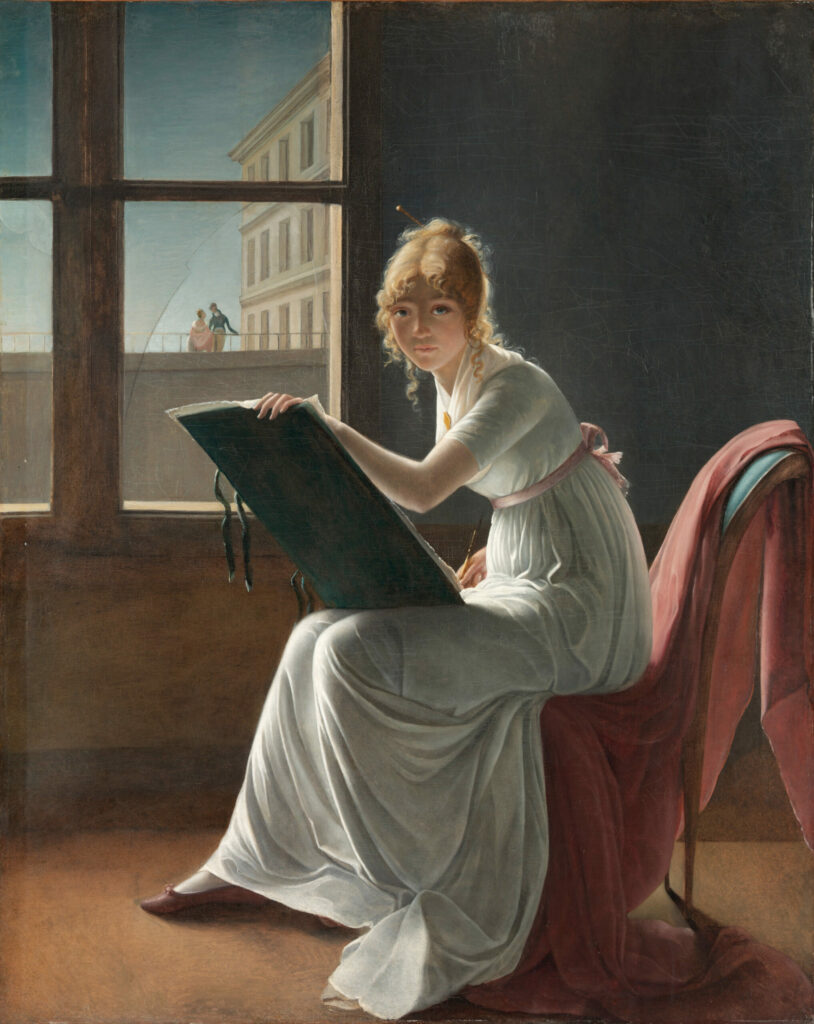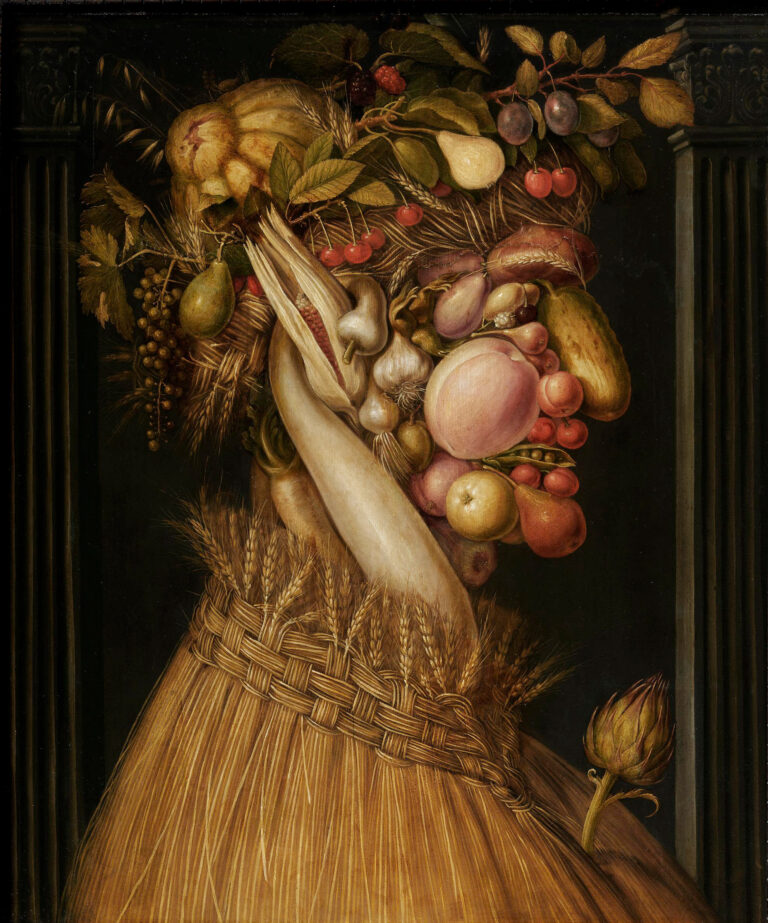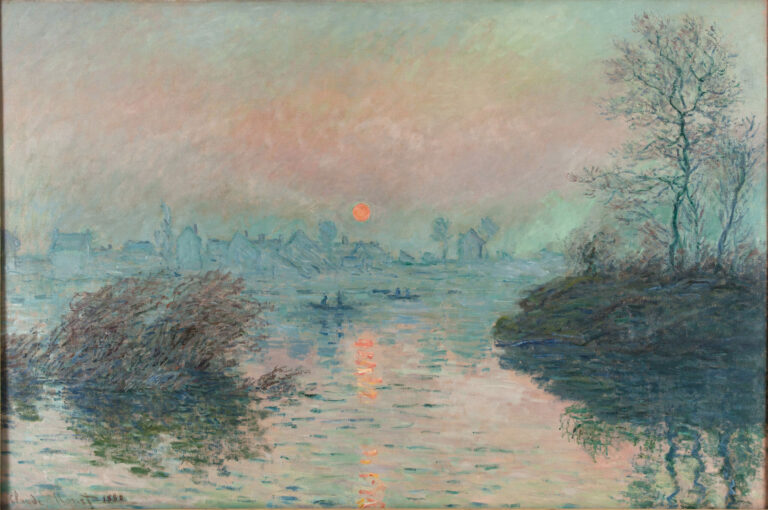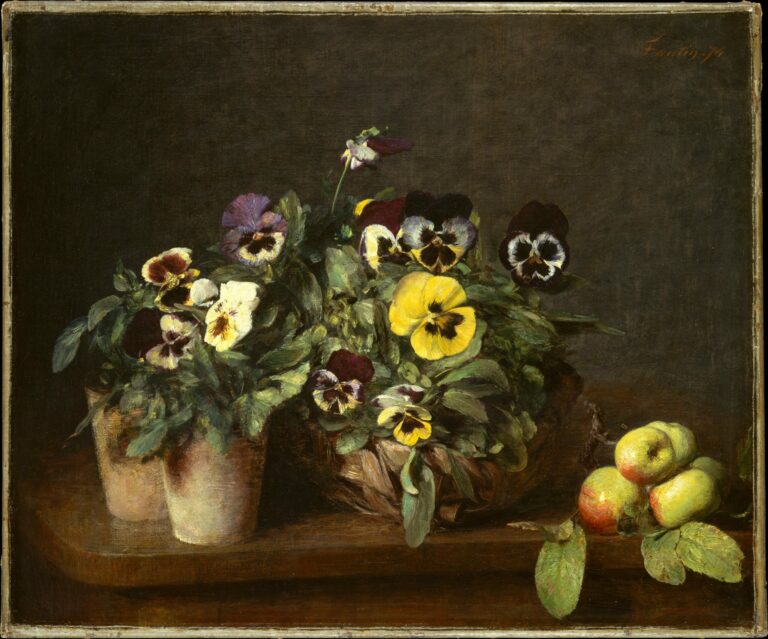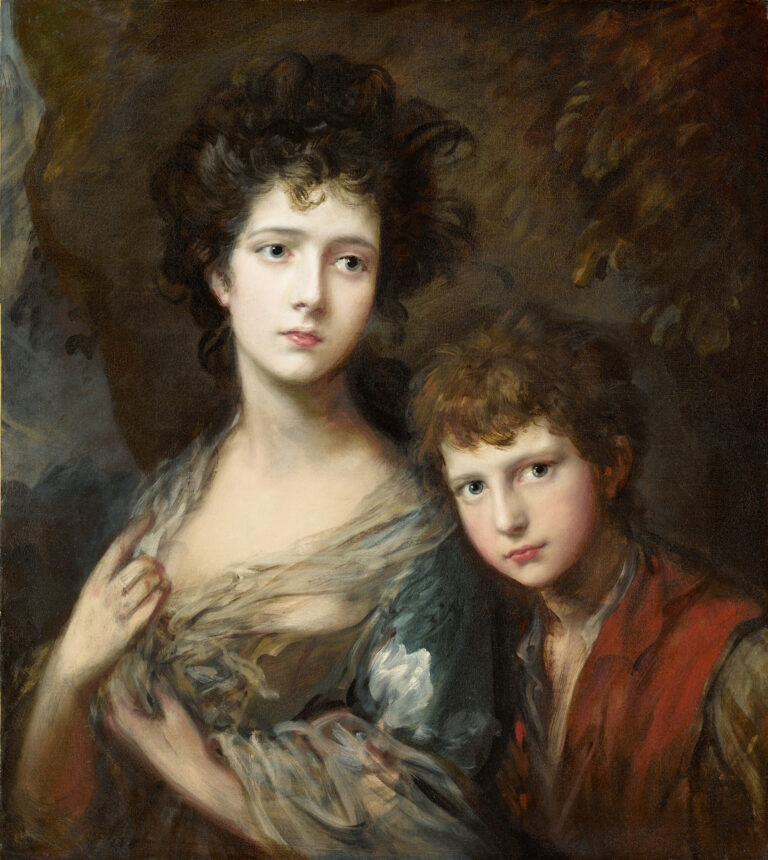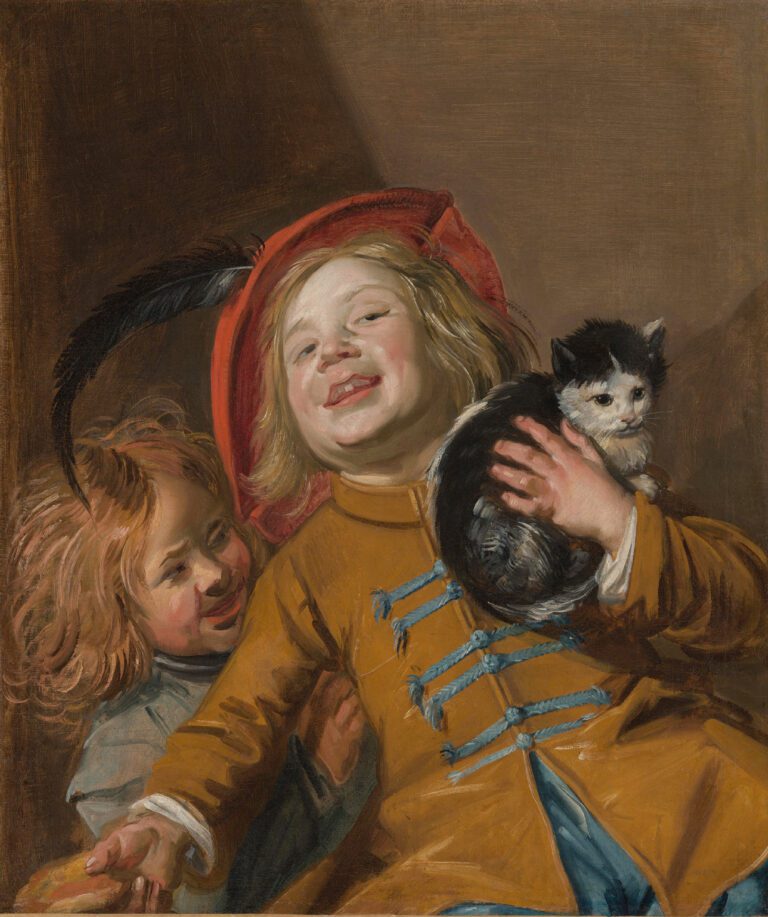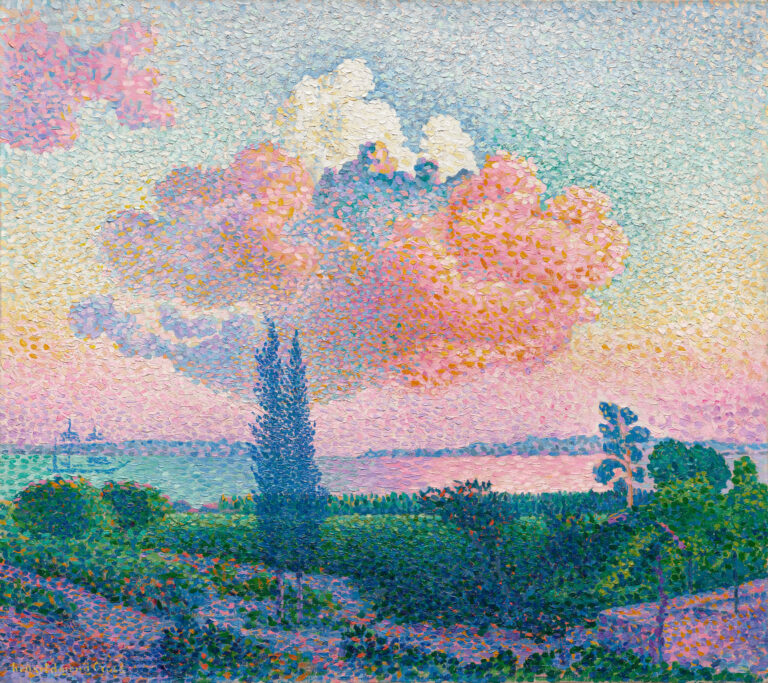Between Light and Revelation: this captivating canvas invites us into the creative intimacy of a young woman with a mesmerizing gaze.
Seated near a window bathed in natural light, she pauses her artistic gesture to directly confront us, establishing a silent dialogue between observer and observed. The masterful composition plays with contrasts between the shadowed interior and exterior luminosity, enhancing the diaphanous whiteness of her Empire-style dress. The cracked windowpane, a virtuosic technical detail, frames a distant couple and adds symbolic dimension to the work: is it a boundary between two worlds or a metaphor for feminine emancipation through art? The vibrant red drapery on the chair brings a dramatic touch to this scene of perfectly executed neoclassical elegance, where the sitter appears in full intellectual determination.
Further Information
- Portrait of Marie Joséphine Charlotte du Val d’Ognes (1786–1868), by Marie Denise Villers, 1801
- 63 1/2 × 50 5/8 in. (161.3 × 128.6 cm)
- The Metropolitan Museum of Art, Fifth Avenue, New York, on display in gallery 634
- https://www.metmuseum.org/art/collection/search/437903
Marie-Denise Villers (1774-1821) perfectly embodies the fate of women artists eclipsed by history. Sister to painter Marie-Victorine Lemoine and trained under Girodet-Trioson, himself a student of the great David, she took advantage of the Salon’s opening to women to exhibit this masterpiece in 1801. Long misattributed to Jacques-Louis David—an error persisting until the 1950s—this canvas became emblematic of the rehabilitation of female artists when it illustrated the cover of Artnews in 1971, accompanying Linda Nochlin’s revolutionary essay, “Why Have There Been No Great Women Artists?” Villers’ rediscovery thus symbolizes the necessary rewriting of an art history too long dominated by men.

